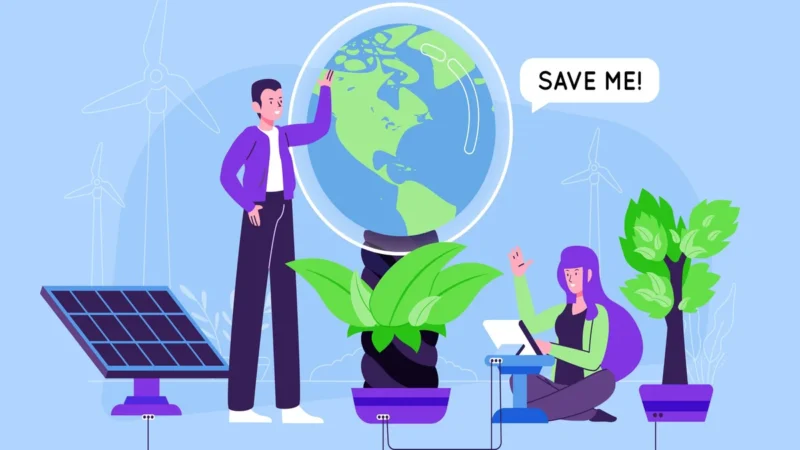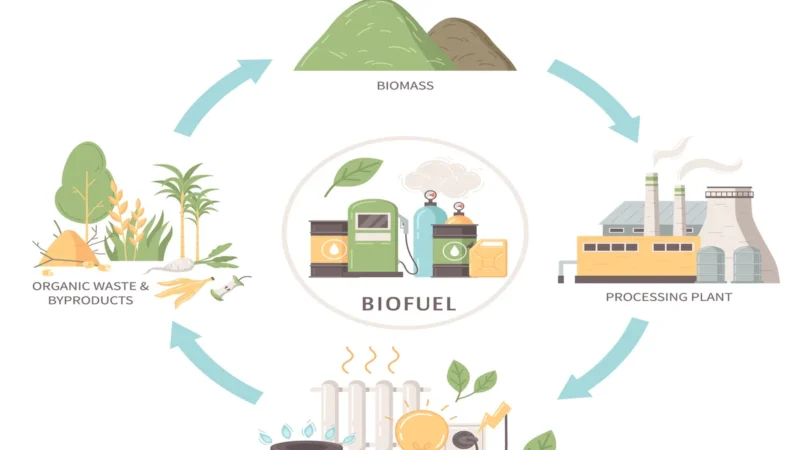Revolutionizing Renewable Energy: The 8 Most Innovative Technologies

The world’s insatiable appetite for energy, coupled with growing environmental concerns, has paved the way for groundbreaking innovations in renewable energy technologies. This article delves into the eight most innovative technologies that are revolutionizing the renewable energy landscape. From harnessing the power of the sun to unlocking the potential of ocean currents, these advancements promise to reshape how we generate and consume energy sustainably.
1. Solar Power Beyond Limits
Solar power technology has come a long way, with significant advancements in photovoltaic cell efficiency and design. Breakthroughs such as tandem solar cells and perovskite materials are pushing the boundaries of solar energy generation, making it more accessible and cost-effective.
2. Wind Energy Reimagined
Offshore wind farms and innovative vertical axis turbines are transforming the wind energy sector. These technologies are overcoming traditional limitations, harnessing stronger and more consistent winds in offshore environments, and enhancing overall efficiency.
3. The Potential of Hydropower
Hydropower is being redefined with the integration of kinetic energy recovery systems and sustainable hydro solutions. Small-scale hydropower projects are gaining traction, utilizing water flow from various sources to generate electricity in eco-friendly ways.
4. Tapping into Geothermal Reserves
Innovations in geothermal energy include enhanced geothermal systems that leverage heat from deep within the Earth’s crust. Geothermal heat pumps are also making residential and commercial spaces more energy-efficient by tapping into the Earth’s natural heat.
5. Advancements in Biomass Conversion
Biomass conversion technologies are evolving, turning organic waste into valuable energy sources like biofuels. Waste-to-energy processes are gaining prominence, effectively addressing waste management challenges while producing renewable energy.
6. Capturing the Ocean’s Energy
Ocean energy, encompassing tidal and wave power, is gaining momentum. Innovative technologies are capturing the kinetic energy of ocean currents, offering a consistent and reliable source of renewable energy.
7. Next-Level Energy Storage
As renewable energy sources become more intermittent, advanced energy storage solutions are crucial. Breakthroughs in battery technology, grid integration, and long-duration storage are ensuring a stable supply of renewable energy even during peak demand.
8. Smart Grids and Beyond
The integration of smart grids and digital energy management systems is optimizing the distribution and consumption of renewable energy. These technologies enable real-time monitoring, efficient load management, and better utilization of available resources.
we can conclude this, The future of renewable energy is brighter than ever, thanks to these eight innovative technologies that are reshaping the way we produce and consume energy. From solar power advancements to harnessing the ocean’s energy potential, these breakthroughs hold the key to a more sustainable and environmentally-friendly energy landscape. Embracing and investing in these technologies will undoubtedly accelerate the global transition to a cleaner, greener energy future.
FAQs
1. How do these innovative renewable energy technologies benefit the environment?
These innovative technologies play a pivotal role in reducing greenhouse gas emissions and minimizing the environmental impact of energy generation. For instance, solar power and wind energy produce electricity without emitting harmful pollutants, while biomass conversion and geothermal systems utilize organic materials and Earth’s heat sustainably.
2. Are these technologies economically viable for widespread adoption?
Yes, many of these technologies are becoming increasingly cost-effective. Advances in manufacturing, materials, and design have driven down the costs associated with solar panels, wind turbines, and energy storage systems. Moreover, as demand for renewable energy grows, economies of scale are further driving down costs.
3. How do innovations in energy storage impact the reliability of renewable energy sources?
Energy storage innovations are crucial for ensuring a steady supply of renewable energy, even when the sun isn’t shining or the wind isn’t blowing. Advanced battery technologies and long-duration storage solutions store excess energy generated during favorable conditions, making it available during peak demand periods.
4. What role do smart grids play in the adoption of these technologies?
Smart grids enable better integration and management of renewable energy sources into existing energy infrastructures. They allow for real-time monitoring, efficient load balancing, and dynamic adjustments to optimize energy distribution. This leads to enhanced grid reliability, reduced energy wastage, and improved overall efficiency.
5. How can individuals and communities benefit from these innovations on a smaller scale?
Individuals and communities can harness these innovations through technologies like solar panels, geothermal heat pumps, and energy-efficient appliances. These solutions reduce energy bills, provide backup power, and contribute to a cleaner environment. Additionally, local-scale projects such as small hydropower and community solar installations offer opportunities for sustainable energy generation and community engagement.


